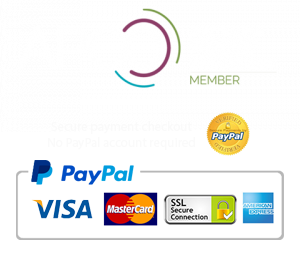
In a world increasingly aware of environmental issues, the demand for sustainable alternatives to traditional packaging materials has grown significantly. Bagasse packaging has emerged as a viable solution, offering both functionality and environmental benefits. Derived from sugarcane fibre, bagasse is gaining popularity as a material that addresses the concerns of eco-conscious consumers and businesses alike.
What is Bagasse and what is it used for?
Bagasse is the fibrous residue left behind after sugarcane or sorghum stalks are crushed to extract their juice. Historically considered a waste product, bagasse is now recognised for its potential as a renewable resource. The fibres can be processed into various forms, including packaging materials such as plates, bowls, trays, and containers.
Environmental Benefits
Renewable Resource: Sugarcane is a rapidly renewable resource that can be harvested annually, unlike trees used for paper or wood-based products which take years to mature.
Biodegradability: Bagasse packaging is biodegradable and compostable under proper conditions, meaning it breaks down into natural elements without leaving harmful residues.
Reduction of Waste: By utilising bagasse, agricultural waste that would otherwise be burned or discarded is put to productive use, reducing landfill waste and associated environmental impacts.
Advantages Over Traditional Materials
Sturdiness: Bagasse products are strong and durable, capable of handling a wide range of temperatures and food types. They provide a reliable alternative to plastic and styrofoam.
Microwave and Freezer Safe: Bagasse packaging is suitable for both heating in microwaves and storing food in freezers, making it versatile for consumer and commercial use.
Customisability: Manufacturers can easily mold bagasse into various shapes and sizes to meet specific packaging needs, from takeaway containers to elegant dinnerware.
Challenges and Considerations
While bagasse packaging offers numerous environmental benefits, it is not without challenges:
Moisture Resistance: Bagasse products can absorb liquids, affecting their integrity over time if not properly coated or sealed.
Cost: Currently, bagasse products may be slightly more expensive than their plastic counterparts due to manufacturing processes and market demand. However, economies of scale and increasing adoption could mitigate this over time.
 Adoption and Future Outlook
Adoption and Future Outlook
The adoption of bagasse packaging is growing steadily across industries such as food service, retail, and catering. Companies are increasingly recognising the importance of sustainability in their operations and are turning to alternatives like bagasse to meet consumer expectations and regulatory requirements.
Looking ahead, innovations in manufacturing techniques and coatings could enhance the moisture resistance and durability of bagasse products, further expanding their applications. Increased consumer awareness and government regulations aimed at reducing plastic waste are also expected to drive market demand for sustainable packaging solutions like bagasse.
Bagasse packaging represents a promising step towards a more sustainable future. By utilising a by-product of sugarcane processing, it offers a renewable and environmentally friendly alternative to traditional packaging materials. While challenges remain, ongoing innovation and increasing consumer demand are likely to propel bagasse packaging into mainstream use, contributing to a cleaner and healthier planet for future generations. As businesses and consumers continue to prioritise sustainability, bagasse stands out as a beacon of hope in the quest for greener packaging solutions.
Bagasse Products stocked by No More Plastic Packaging: Bagasse Coffee Cup lids, Sugarcane Burger Boxes, Sugarcane Ice Cream Cups, Sugarcane Takeaway Containers, Bagasse Bowls.
© No More Plastic Packaging 2024
Bagasse is the fibrous residue left behind after sugarcane or sorghum stalks are crushed to extract their juice. Historically considered a waste product, bagasse is now recognised for its potential as a renewable resource. The fibres can be processed into various forms, including packaging materials such as plates, bowls, trays, and containers.
—
While challenges remain, ongoing innovation and increasing consumer demand are likely to propel bagasse packaging into mainstream use, contributing to a cleaner and healthier planet for future generations. As businesses and consumers continue to prioritise sustainability, bagasse stands out as a beacon of hope in the quest for greener packaging solutions.
—


